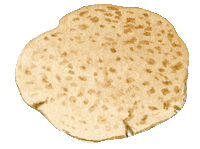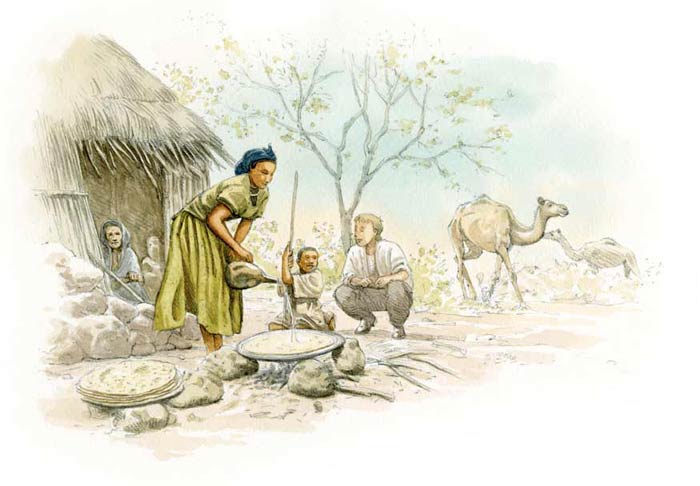Injera

Form: Thin griddlecake, 35 to 50 cm (nearly 14 in. to nearly 20 in.) in diameter
Country of origin: Ethiopia
What distinguishes it from other methods of bread making: Made using teff flour
Category of bread: (1) Similar to Armenian lavash, Lebanese markouk and Mexican tortilla
Particularity: The Ethiopians likes its acidic taste
Ingredients: Teff flour; leaven or yeast; salt; warm water

Ethiopia
It is rare that the use of a cereal and that of the produce it is made from – in this case, a leaf of bread the Ethiopians call injera – managed to get so mixed up in people’s minds. When you talk about Ethiopian injera, it is obvious that you are also referring to teff (Eragrotis tef), a cereal from the north of the country, only adapted to the climate in neighboring Eritrea and Kenya. It is impossible to talk about teff without thinking of this big pancake – practically the only end product in terms of food (along with kitta, another unleavened bread; porridge, and alcoholic beverages).
The preparation of this large griddlecake has a grammar all its own, with movements repeated from generation to generation in an almost unchanging manner. The bukara is a large dish, formerly made of terra cotta, today in metal or plastic, in which the teff and water are mixed in a manner not so different from the ancient customs: a long fermentation process that contributes to livening up the taste and developing an almost spicy aroma. Women or bakers in Addis Ababa and other towns and villages in the country then shape the dough into large pieces of rolled-out pastry, which are then placed on a mitad, a hot, flat iron pan. This metal plate is greased beforehand. The sâj in the Near East serves exactly the same function. The sheet of teff is instantaneously seized on the bottom while the top remains porous.
Injera is, as you probably imagine, part of every meal and every celebration. It is mainly eaten with wat, a meat and vegetable ragout, with the whole family seated around the table. To eat, tear off a small piece the size of your palm, with the porous side upwards. Use it to scoop or grab meat or vegetables, using your fingers to control, and trying not to touch the food. You can also use injera to sop up the sauce left at the bottom of the wat. This humongous sheet of bread seems to “swathe” the entire family, creating an intimate atmosphere.

